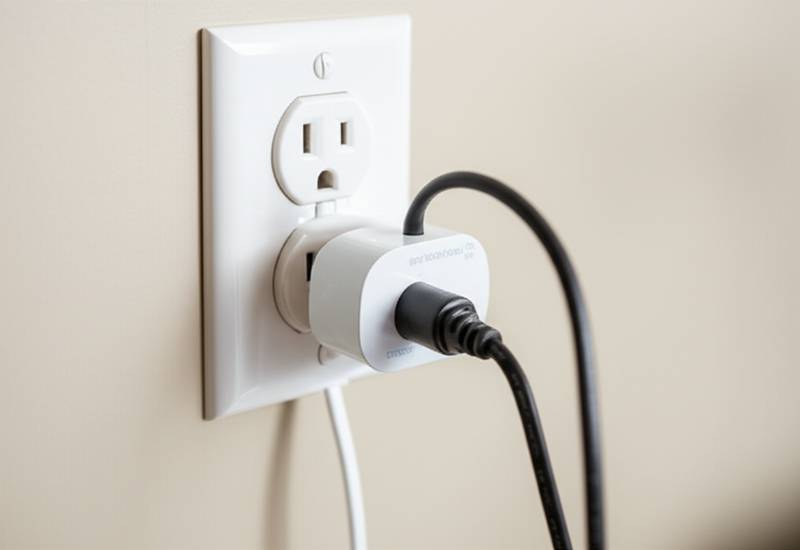Budget Ways to Turn Old Appliances into Smart Ones
Smart homes have evolved from optional luxuries to essential features in daily life. Many individuals hesitate to discard functional appliances solely for technological upgrades. Fortunately, simple add-ons allow older devices to gain intelligence and integrate seamlessly into a connected environment. Items like coffee makers, fans, or lamps can now respond to voice instructions, operate on schedules, and contribute to an efficient household.
This article outlines practical methods to retrofit existing appliances. Each approach emphasizes affordability and ease of implementation. Readers will discover how to create a cohesive smart ecosystem that enhances convenience without major renovations.
1. Smart Plugs: The Foundation of Appliance Connectivity
Smart plugs serve as versatile gateways to transform ordinary appliances into responsive components of a smart home. These compact devices plug into standard outlets and then accommodate the appliance's cord. Once connected to Wi-Fi, they enable remote control via smartphone applications or voice assistants such as Alexa or Google Assistant.
Users can schedule operations, monitor energy usage, and receive alerts for unusual activity. For instance, a smart plug attached to a space heater prevents overheating by automatically shutting off after a set duration. Models from brands like TP-Link and Kasa provide reliable performance at prices under twenty dollars per unit.
Why it matters: Smart plugs extend smart functionality to any plug-in device, eliminating the need for built-in features. They promote energy conservation by allowing precise control and integration with broader home automation routines.
2. Smart Bulbs: Lighting That Adapts to Your Lifestyle
Traditional lighting systems often limit users to manual switches, but smart bulbs introduce dynamic control without altering fixtures. These bulbs link to home networks through Wi-Fi or hubs, supporting adjustments in brightness, color, and timing from a mobile device or voice command.
Automation features permit bulbs to mimic natural daylight cycles or respond to occupancy. Advanced options analyze usage patterns to optimize settings over time, such as gradually brightening for wake-up routines. Affordable choices from Sengled and Wyze integrate with popular platforms like Apple HomeKit and Samsung SmartThings.
Why it matters: Effective lighting influences productivity and well-being while impacting electricity costs. Smart bulbs facilitate personalized environments and reduce waste through automated shutoffs and efficient LED technology.
3. Smart Sensors: Detecting and Responding to Your Environment
Sensors add awareness to your home by monitoring conditions like motion, temperature, or door status. Placed strategically, they trigger actions in connected appliances, such as activating a fan when humidity rises or alerting you to an open garage door. Battery-powered models require no wiring and pair easily with existing smart plugs or hubs.
For example, a motion sensor near entryways can illuminate lights or start a security camera upon detecting movement. Devices from Aqara and Ecolink offer multi-function capabilities, including vibration detection for appliances like washers to notify completion of cycles.
Why it matters: Sensors create proactive systems that enhance safety and comfort. They enable appliances to react intelligently to real-world changes, fostering a responsive living space without constant manual intervention.
4. Retrofit Smart Switches: Enhancing Built-In Controls
Existing wall switches can gain intelligence through retrofit smart switches, which replace standard units while maintaining aesthetic appeal. These devices support app-based and voice-activated operation for lights or fans, alongside traditional toggle functionality for guests.
Certain models incorporate sensors for automatic adjustments based on motion or light levels. Installation typically involves basic tools and follows clear instructions, avoiding complex electrical work. Options from Leviton and GE provide compatibility with Zigbee or Z-Wave protocols for robust connectivity.
Why it matters: Retrofit switches preserve original hardware designs while introducing modern features. They streamline control across wired systems, ensuring harmony between legacy setups and new technology.
5. Smart Controllers and Hubs: Centralizing Your Smart Network
As smart devices accumulate, dedicated controllers and hubs unify operations for smoother management. These units serve as communication bridges, allowing diverse brands to interoperate through standards like Matter or IFTTT. Voice-enabled hubs, such as Amazon Echo or Google Nest, process commands to orchestrate multiple actions simultaneously.
Routines become effortless; a single phrase might brew coffee, raise blinds, and play music. Hubs also support offline functionality for essential tasks, reducing reliance on constant internet access. Compact models from Wink and Hubitat accommodate expansion as needs grow.
Why it matters: Centralized control eliminates fragmented experiences from multiple apps. It ensures reliable integration, scalability, and enhanced security through unified firmware updates.
Implementing Your Smart Upgrades
Retrofitting appliances begins with assessing current needs and selecting compatible devices. Start with high-impact items like frequently used lamps or fans to experience quick wins. Test integrations gradually to verify smooth operation across your network.
Budget allocation proves straightforward; most add-ons cost between ten and fifty dollars. Prioritize energy-monitoring features to track savings over time. These enhancements not only modernize routines but also build a foundation for future expansions, delivering lasting value through efficiency and ease.
